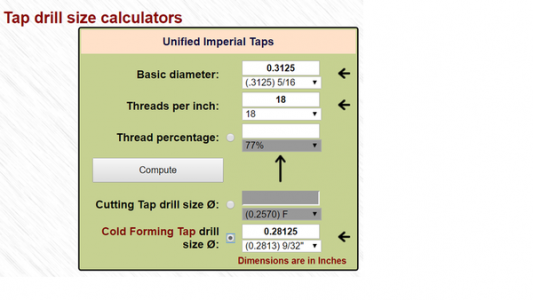- Joined
- Oct 30, 2016
- Messages
- 155
I'm going to make a fixture to hold a piece of nickel silver to make a cork check for a fly rod reel seat.
The short story is that I need to drill a hole to tap for a 5/16 socket cap screw of 18 TPI. Is there a standard size hole I should drill for the tap and how can I find out what it should be?
Also, is there a table with all this data available for a newbie such as me that's understandable?
Any help appreciated,
cheers
The short story is that I need to drill a hole to tap for a 5/16 socket cap screw of 18 TPI. Is there a standard size hole I should drill for the tap and how can I find out what it should be?
Also, is there a table with all this data available for a newbie such as me that's understandable?
Any help appreciated,
cheers


